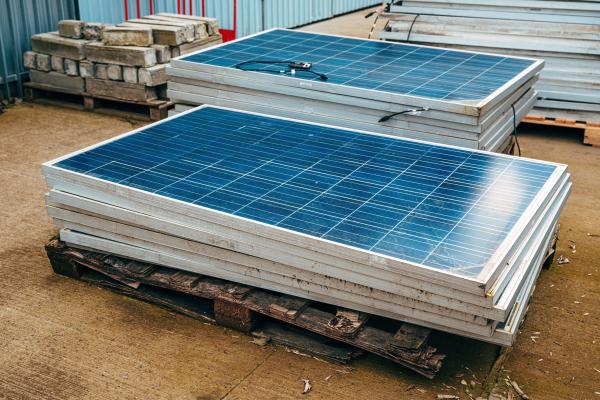
The Joint Research Centre (JRC) recently published a report illustrating a comprehensive methodology for calculating and verifying the carbon footprint of industrial batteries. The methodology aims at providing a standardised approach to quantify greenhouse gas emissions across the lifecycle of batteries, ensuring transparency and alignment with EU climate and competitiveness goals.
Batteries’ carbon footprint: reducing impact, informing customers
As illustrated in the report, the JRC developed detailed guidelines for determining the carbon footprint of rechargeable industrial batteries (CFB-IND) without external storage and with an energy capacity above 2 kWh.
These guidelines aim at establishing and harmonising the methodology to calculate and verify the carbon footprint of batteries placed on the EU market. Battery manufacturers and other economic operators will then have to clearly state the carbon footprint of their battery in an obligatory declaration, as stated in Article 7 of the EU Batteries Regulation.
The favorable outcome of this declaration requirement is twofold, both promoting the use of low-carbon emission batteries in the EU and effectively informing customers on their sustainability.
Scope of the study: type of batteries and footprint calculation
The report covers a wide range of battery types: it includes almost all batteries with internal storage and an energy capacity above 2 kWh.
Some examples of applications of battery types included in the study are:
- home storage systems (such as batteries for solar energy storage);
- uninterruptable power supply (UPS) units for data centres or hospitals;
- medical equipment or machinery;
- large container-based energy storage systems in support of electricity grids;
- electrified ships and trains;
- electrically powered aircrafts.
The carbon footprint is calculated considering the total service provided by the battery over its lifetime, thus considering aspects of durability and longevity, in line with circular economy principles. Furthermore, CFB-IND covers all lifecycle stages of said batteries (except battery use), from raw material acquisition and manufacturing, up to waste management and recycling.
Policy relevance
This study provides technical support to meet specific requirements stated in the Batteries Regulation (EU) 2023/1542: as specified in Art.7, each battery that falls under the scope of this article shall come with a mandatory declaration of its carbon footprint, and a public carbon footprint report that makes the CFB declaration transparent and accessible to the user. As such, the CFB-IND declaration will be a regulatory tool the EU can leverage to reach the following goals contained in the Regulation:
- Reduce carbon emissions along the battery life cycle
- Promote circularity through standardised recycling practices
- Ensure transparency via public CFB declarations and verification
Background
The report builds on the existing draft Delegated Act for calculating the carbon footprint of electric vehicle batteries. Nevertheless, the scope of the present report is wider and comprises a larger number of batteries and applications.
First, it considers batteries with different cell chemistries: not only lithium-ion and nickel-metal hydride, as is the case for electric vehicles, but also lead-acid, nickel cadmium, and more. Furthermore, the batteries considered apply to many other fields, from trains, airplanes and forklifts to storage for photovoltaic panels and wind plants.
Looking ahead: policy support and future research
The report lays down the draft methodology and scientific base to determine and verify the CFB-IND, which will then feed into further developments of the Delegated Act to ultimately define the official methodology underlying CFB-IND declarations.
It also provides guidance for future methodological developments and case studies appertaining to the life cycle assessment of batteries.
As established in Art.7 of the Batteries Regulation, future work will focus on adoption by the Commission of another delegated act on industrial batteries with internal storage, addressing the development of a methodology to declare the carbon footprint performance classes based on the CFB-IND rules.
Regarding other battery categories falling under Art.7, the JRC will work on the development of a methodology for declaring the CFB of light means of transport (LMT) batteries.
Related content
Details
- Publication date
- 28 May 2025
- Author
- Joint Research Centre
- JRC portfolios 2025-27

